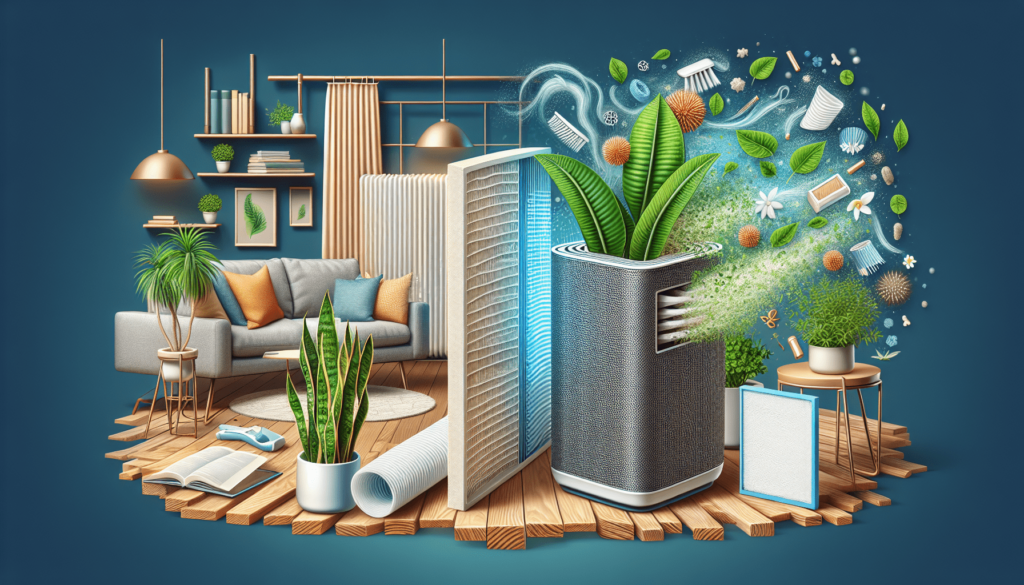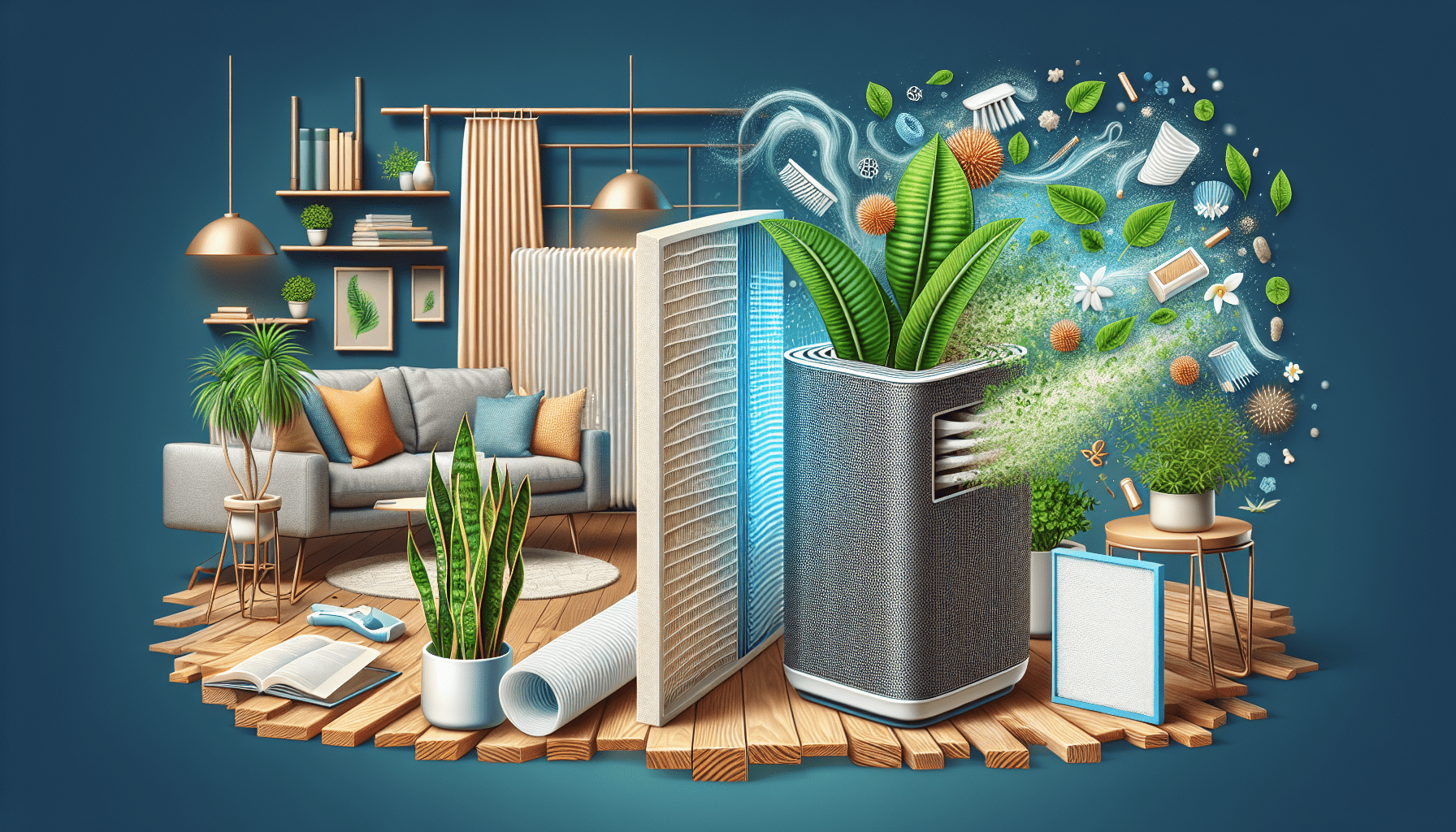Do You Need An Air Purifier In Every Room?If you’re wondering whether you can clean air purifier filters, then you’re in the right place. In this article, we will explore the possibility of cleaning these essential components of air purifiers. We all know that air purifiers play a crucial role in maintaining clean and healthy indoor air, but many often overlook the importance of regularly cleaning the filters. So, let’s find out if cleaning air purifier filters is a viable option and if it can help prolong the lifespan and efficiency of these powerful devices.

Understanding Air Purifier Filters
Air purifier filters are an essential component of any air purifier. They help remove impurities and contaminants from the air, ensuring that you breathe in clean and fresh air. Understanding the different types of air purifier filters, as well as the importance of cleaning them regularly, is crucial to maintain the efficiency and effectiveness of your air purifier.
Different Types of Air Purifier Filters
Air purifiers come with various types of filters, each designed to target specific pollutants and contaminants. The most common types of air purifier filters include pre-filters, HEPA filters, and activated carbon filters.
The pre-filter acts as the first line of defense, capturing larger particles like dust, pet hair, and lint. HEPA filters, or High-Efficiency Particulate Air filters, are designed to trap microscopic particles such as pollen, dust mites, and pet dander. Activated carbon filters work by absorbing and neutralizing odors, gases, and chemicals.
Importance of Cleaning Air Purifier Filters
Regularly cleaning your air purifier filters is crucial for maintaining the performance and efficiency of your air purifier. Over time, filters accumulate dirt, dust, and contaminants, which can reduce their effectiveness. Cleaning the filters not only ensures better air quality but also prolongs the lifespan of the filters, saving you money in the long run.
When to Clean Air Purifier Filters
Knowing when it’s time to clean your air purifier filters is essential to maintain their efficiency. There are two primary methods to determine if your filters require cleaning: manufacturer recommendations and visual inspection of the filter.
Manufacturer Recommendations
Every air purifier comes with specific recommendations from the manufacturer regarding how often the filters should be cleaned. These recommendations are usually based on the average usage and air quality conditions. It is important to follow these guidelines to ensure optimal performance. Refer to the user manual or contact the manufacturer if you are uncertain about the recommended cleaning frequency.
Visual Inspection of Filter
A visual inspection of the filter also provides valuable insights into its cleanliness. If the filter appears visibly dirty, dusty, or clogged, it’s time to clean it. Additionally, if you notice a decrease in the airflow or a strange odor coming from your air purifier, it is a good indication that the filters need cleaning.
Preparing for Cleaning
Before you start cleaning your air purifier filters, it is essential to follow a few preparatory steps to ensure a safe and efficient cleaning process.
Switch Off and Unplug the Air Purifier
To prevent any accidents or electrical shocks, make sure to switch off and unplug your air purifier before you begin the cleaning process. This will ensure your safety and protect the integrity of the appliance.
Gather Cleaning Supplies
Before you start cleaning, gather all the necessary cleaning supplies. These may include a vacuum cleaner with a brush attachment or a soft brush, mild detergent or liquid soap, warm water, and a clean cloth or sponge. Gathering these supplies in advance will make the cleaning process smoother and more efficient.
Cleaning Pre-Filter
The pre-filter plays a crucial role in capturing larger particles and prolonging the lifespan of the other filters. Cleaning the pre-filter regularly helps maintain its effectiveness and ensures the optimal functioning of your air purifier.
Removing and Vacuuming Pre-Filter
Start by removing the pre-filter from your air purifier according to the manufacturer’s instructions. Once removed, use a vacuum cleaner with a brush attachment or a soft brush to gently remove any dust, dirt, or debris. Pay special attention to any visible particles stuck on the pre-filter.
Washing Pre-Filter
If your pre-filter is washable, follow these steps to clean it properly. Mix a mild detergent or liquid soap with warm water in a bowl or sink. Submerge the pre-filter in the soapy water and gently agitate it to remove any dirt. Rinse the pre-filter thoroughly with clean water until all the soap residue is gone. Allow the pre-filter to air dry completely before reassembling it.
Cleaning HEPA Filters
Cleaning HEPA filters requires careful attention, as they are delicate and can easily be damaged if not handled properly. Always refer to the manufacturer’s instructions before attempting to clean a HEPA filter.
Check Manufacturer’s Instructions
Read the user manual or contact the manufacturer to determine if your HEPA filter is washable or if it requires replacement. Some HEPA filters are not designed to be cleaned and should be replaced periodically to maintain their efficiency.
Vacuuming HEPA Filters
If your HEPA filter is washable, gently vacuum it using a vacuum cleaner with a brush attachment or a soft brush. Be sure to remove any loose dirt and debris from both sides of the filter. Take care not to press too hard or use excessive force, as this can damage the delicate filter fibers.
Washing HEPA Filters
If your HEPA filter is washable, follow the manufacturer’s instructions for proper cleaning. In most cases, it is recommended to rinse the filter under running water without using any soap or detergent. Gently agitate the filter to remove any trapped particles. Rinse thoroughly until the water runs clear. Allow the filter to air dry completely before reassembling it.
Cleaning Activated Carbon Filters
Activated carbon filters are primarily responsible for absorbing and neutralizing odors, gases, and chemicals. Although they don’t require washing, they can still benefit from a cleaning routine to maintain their effectiveness.
Vacuuming and Tapping Activated Carbon Filters
To clean activated carbon filters, gently vacuum them using a vacuum cleaner with a brush attachment or a soft brush. This will help remove any loose debris or dust that may have accumulated. Additionally, lightly tapping the filters on a solid surface can dislodge any trapped particles. Cleaning activated carbon filters in this manner helps ensure their longevity and efficiency.
Drying and Reassembling Filters
Properly drying and reassembling the filters is crucial after cleaning to prevent mold growth and maintain the efficiency of your air purifier.
Drying Filters
After washing or vacuuming the filters, it is essential to allow them to air dry completely. Placing them in a well-ventilated area or under a fan can help speed up the drying process. Make sure the filters are completely dry before reattaching them to the air purifier.
Reassembling Filters
Once the filters are dry, carefully reassemble them according to the manufacturer’s instructions. Ensure that each filter is properly seated and secured in its designated place. Double-check all connections and closures to guarantee the filters are properly installed before switching on the air purifier.
Frequency of Cleaning
The frequency of cleaning your air purifier filters depends on several factors, including usage and the effectiveness of the air purifier in your specific environment.
Cleaning Frequency Based on Usage
For heavily used air purifiers in environments with high levels of pollutants or allergens, cleaning the filters every 2-3 months may be necessary. However, if the air purifier is used less frequently or the air quality is generally good, cleaning the filters every 4-6 months might be sufficient. Remember to refer to the manufacturer’s recommendations to determine the ideal cleaning frequency for your specific air purifier model.
Effectiveness of the Air Purifier
Monitoring the effectiveness of your air purifier can also help determine the cleaning frequency. If you notice a decrease in air quality, unpleasant odors, or reduced airflow, it may indicate that the filters need immediate cleaning. Regularly checking the performance of your air purifier will ensure clean and healthy air in your living space.
Replacing Air Purifier Filters
While regular cleaning helps maintain the efficiency of your air purifier filters, they will eventually reach a point where replacement becomes necessary. Knowing the signs and steps to replace the filters is essential to ensure the continued effectiveness of your air purifier.
Signs for Filter Replacement
There are a few signs to watch out for that indicate it’s time to replace your air purifier filters. These signs include a significant decrease in airflow, persistent unpleasant odors, visible damage or wear to the filters, and the inability of the filters to effectively capture particles. If you encounter any of these signs, it is recommended to replace the filters promptly.
Purchasing and Installing New Filters
When purchasing new filters, it is crucial to buy filters specifically designed for your air purifier model. Refer to the manufacturer’s instructions or contact customer support for guidance on the appropriate replacement filters. Once you have the correct filters, carefully follow the manufacturer’s instructions to install them correctly. Ensure that each filter is securely placed in its designated spot before switching on the air purifier.
Maintenance Tips for Air Purifier Filters
In addition to regular cleaning and filter replacement, there are a few maintenance tips that can help extend the lifespan of your air purifier filters and optimize their performance.
Regular Dusting and Vacuuming of the Air Purifier
Aside from cleaning the filters, regularly dusting and vacuuming the external parts of your air purifier is essential. Dust and debris can accumulate on the surface, reducing the efficiency of the appliance. Use a soft cloth or a vacuum cleaner with a brush attachment to gently remove any external dust buildup. This simple routine will help maintain the overall cleanliness and performance of your air purifier.
Preventing Excessive Odor and Contaminant Build-up
To prevent excessive odor and contaminant buildup in your air purifier, it is advisable to tackle the source of the odors and pollutants. Proper ventilation, regular cleaning, and minimizing the use of harsh chemicals or smoking indoors can significantly reduce the load on your air purifier filters. Taking these preventive measures will not only maintain the effectiveness of the air purifier but also contribute to a healthier and more pleasant indoor environment.
By understanding different types of air purifier filters, knowing when and how to clean them, and following regular maintenance practices, you can ensure that your air purifier functions at its optimal level, providing you with clean and fresh air to breathe. Remember, a well-maintained air purifier filter is the key to a healthier and more comfortable living space.

